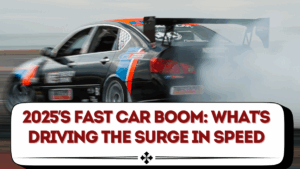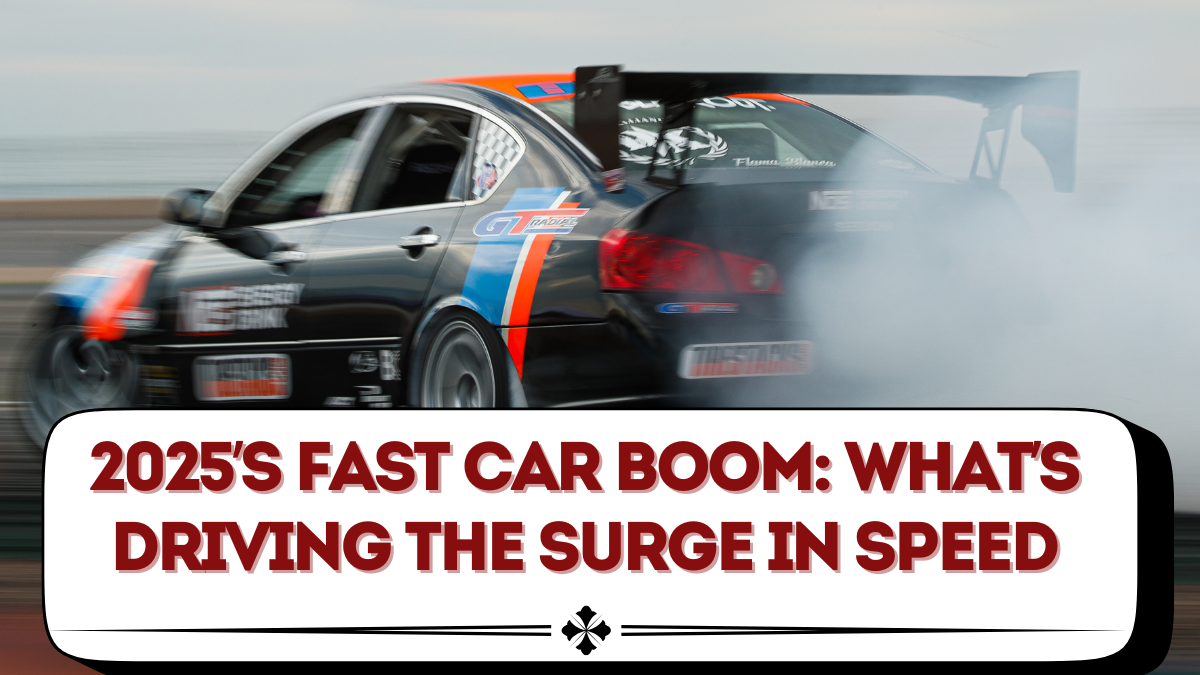Speed has always fascinated car lovers, but in 2025, the obsession with performance has reached new heights. From luxury supercars to electric speed machines, the fast car trend is dominating global headlines. Automakers are competing fiercely to break speed records, introduce cutting-edge powertrain technologies, and blend luxury with raw acceleration.
What makes 2025 unique is that performance is no longer limited to high-octane petrol engines. Electric vehicles are now competing head-to-head with traditional supercars, proving that the future of speed lies in both horsepower and battery innovation. This article explores what is fueling the surge in fast cars this year, which models are leading the race, and what it means for the automotive industry.

The Evolution of Speed in 2025
Traditionally, speed was all about engine displacement and horsepower. While combustion engines still hold their ground, advancements in EV technology have transformed the performance market. Electric drivetrains offer instant torque, enabling cars to achieve 0–100 km/h in just a few seconds. The fastest production cars today are no longer just Ferraris and Lamborghinis—they now include Teslas, Rimacs, and other electric innovators.
Consumers are driving this change. Younger buyers want performance cars that not only thrill but also reflect sustainability. Automakers are responding with hybrid hypercars, lightweight designs, and aerodynamic innovations that push boundaries further than ever.
Record-Breaking Cars of 2025
Several cars released in 2025 have set new benchmarks for speed and performance.
Standout models include:
-
Rimac Nevera 2025 Edition – Electric hypercar capable of over 400 km/h with unmatched acceleration.
-
Bugatti Tourbillon – Successor to the Chiron, blending hybrid power with extreme aerodynamics.
-
Tesla Roadster 2025 – Promises a 0–100 km/h time under 2 seconds with advanced battery tech.
-
Koenigsegg Jesko Absolut – Continuing its reign as one of the fastest combustion-engine cars.
-
Porsche Taycan Turbo GT – A high-performance EV designed to rival traditional sports cars.
These models show that both electric and hybrid powertrains are redefining what fast cars can achieve.
Powertrain Innovations Driving the Trend
At the heart of the 2025 fast car trend are advancements in powertrain technology.
Key innovations include:
-
Instant Torque from EVs – Electric motors deliver power instantly, giving lightning-fast acceleration.
-
Hybrid Hypercars – Combining petrol engines with electric motors for maximum output.
-
Lightweight Materials – Use of carbon fiber and aluminum for improved aerodynamics and speed.
-
AI-Assisted Driving – Advanced software helps manage torque, grip, and aerodynamics at high speeds.
-
Battery Cooling Systems – Enhanced thermal management ensures EVs sustain performance over longer drives.
This technology is not only about breaking records but also about making fast cars more reliable and accessible.
The Market for Fast Cars in 2025
Performance cars once catered exclusively to wealthy enthusiasts, but the market is expanding. Affordable performance EVs are entering the mainstream, allowing more people to experience thrilling acceleration without spending millions. Automakers like Tesla, Hyundai, and even Tata Motors are offering performance-focused EVs at lower price points.
At the same time, luxury brands are pushing ultra-exclusive hypercars, often limited to a few dozen units. This dual market strategy—accessible performance and elite exclusivity—is making 2025 the most dynamic year for speed-focused vehicles.
Comparison of 2025 Performance Cars
| Model | Type | 0–100 km/h Time | Top Speed |
|---|---|---|---|
| Rimac Nevera 2025 | Electric Hypercar | 1.9 sec | 412 km/h |
| Bugatti Tourbillon | Hybrid Hypercar | 2.2 sec | 430+ km/h |
| Tesla Roadster 2025 | Electric Sports Car | <2 sec | 400 km/h |
| Koenigsegg Jesko Absolut | Combustion Hypercar | 2.5 sec | 480 km/h |
| Porsche Taycan Turbo GT | Electric Sports Sedan | 2.8 sec | 350 km/h |
This table highlights how electric cars are now competing on equal terms with combustion-engine legends.
Challenges in the Fast Car Segment
While the excitement is undeniable, the fast car industry also faces challenges.
-
Affordability – Hypercars remain out of reach for most buyers.
-
Safety Concerns – Extreme speeds raise questions about road safety and responsible usage.
-
Infrastructure – EV hypercars require ultra-fast chargers, which are still limited.
-
Environmental Impact – High-performance combustion engines face stricter emissions regulations.
Balancing innovation with safety and sustainability remains a top priority for manufacturers.
FAQs
Which is the fastest car of 2025?
The Koenigsegg Jesko Absolut currently holds the record for top speed, while the Rimac Nevera is the fastest electric hypercar.
Are electric cars faster than petrol cars now?
In terms of acceleration, yes. Electric cars deliver instant torque, allowing them to reach 100 km/h quicker than most petrol supercars.
Is the Tesla Roadster 2025 real or still delayed?
Tesla has confirmed production for 2025, with deliveries expected to begin later in the year.
Can everyday buyers afford fast cars in 2025?
Yes, brands like Tesla and Hyundai are offering performance EVs at lower prices, making speed more accessible.
Are fast cars safe to drive on public roads?
Most fast cars are road-legal, but their performance is best experienced on tracks designed for high speeds.
Conclusion
The fast car trend in 2025 is unlike anything the automotive world has seen before. With electric hypercars matching and even surpassing traditional supercars, speed is no longer just about petrol engines. Powertrain innovations, hybrid technology, and AI-driven systems are setting new performance benchmarks. While hypercars remain exclusive, the arrival of affordable performance EVs means that the thrill of speed is now within reach for more drivers. As automakers push boundaries further, 2025 will be remembered as the year when fast cars truly entered a new era.
Click here to know more.
